Penn Presbyterian Advanced Care Pavilion
EwingCole was tasked with the redesign for the Penn Presbyterian Advanced Care Pavilion in Philadelphia, Pennsylvania.
Penn Presbyterian Advanced Care Pavilion of the University of Pennsylvania Health System (UPHS) improved and expanded its existing ambulatory and acute care programs in the short term and plan for a long term improvement of its facilities. The challenge was to create a new trauma center that includes upgrades and efficiency of caring for these critical patients.
The space unites more than 20 medical and surgical specialists and combines new features aimed at improving patient and family comfort, with modern technologies effectively elevating the care processes and providing a better value to both patients and payers. The scope of the project included three state-of-the-art critical care units – including a designated Heart and Vascular critical care unit, and PPMC’s first neurosurgical and neurocritical care inpatient units – increasing bed capacity by as many as 36 beds.
The space also included a 16-bed increase in capacity in the new Emergency Department, in addition to a new 5-bay Rapid Assessment Treatment area designed to quickly and accurately triage emergency patients; 24/7 eye injury treatment in the Emergency Department; a new concourse with a consolidated Pre-Admissions Testing and Medical Imaging services, including the most advanced CT and MRI technology, digital X-rays, ultrasound and flouroscopy; a new surgical services suite that provides a centralized admissions area and lounge for all surgical patients and their guests, and includes a 16-bay surgical prep area as well as a 16-bay post-surgical recovery suite and immediate adjacency to the existing operating rooms; a new inpatient therapy gym; and an outdoor space which serves as both a healing garden and a common outdoor space for eating, and gathering.
The exterior design creates a large ribbon of grey and slate colored masonry and metal panels that incorporates the building base and rises to wrap around a large surface of glass, finally screening the penthouse and the new Helipad. The variegated panels break the large surface of the metal and provide visual interest and depth. The blue/grey colors of the masonry and metal panels introduce a new palette to the site. The blue/grey of the ribbon is juxtaposed to the printed terra cotta red screen on the glass surface of the building. While the metal panels and the masonry introduce a new fresh element to the site, the terra cotta print ties to the site’s brick context, creating a surprise inversion and color play.
High contrast materials and pops of bright colors assist with patient and visitor anxiety. Studies show that spaces with bright colors and high contrast engage those occupying the space and can lower anxiety by drawing someone’s attention away from their stressors.
Locations for large scale photography were designed into the project in waiting rooms, treatment spaces and elevator lobbies. Penn Presbyterian Advanced Care Pavilion ran a local photography contest allowing Philadelphians to submit photos to be turned into murals.
Architect: EwingCole
Photography: Halkin Mason Photography

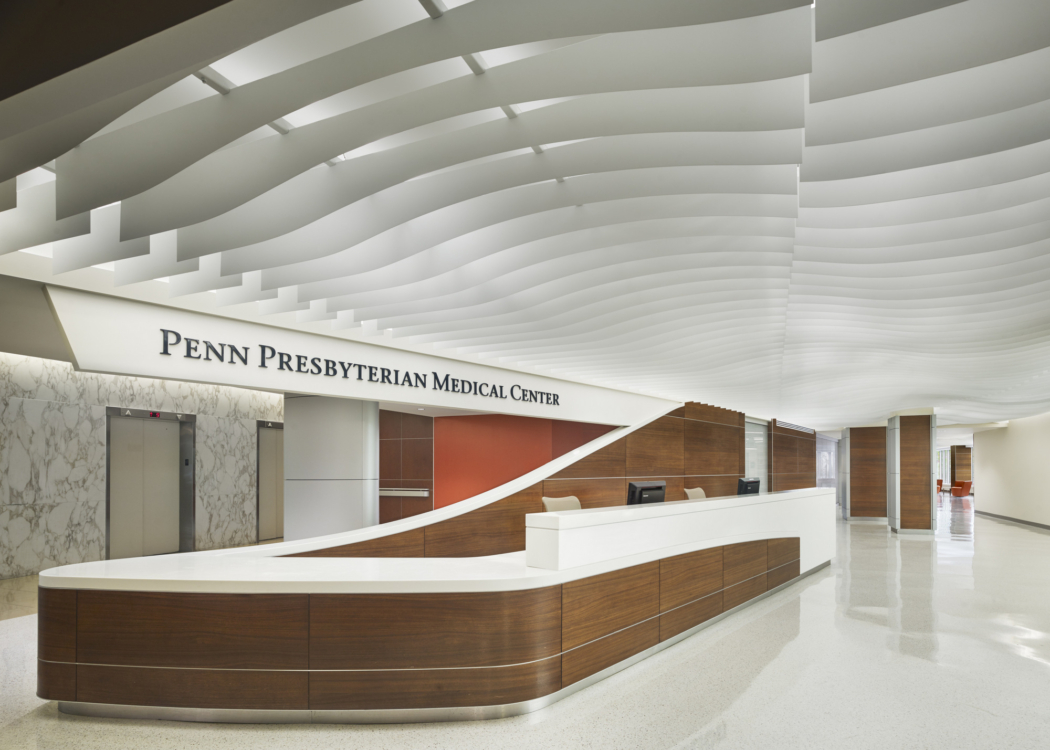
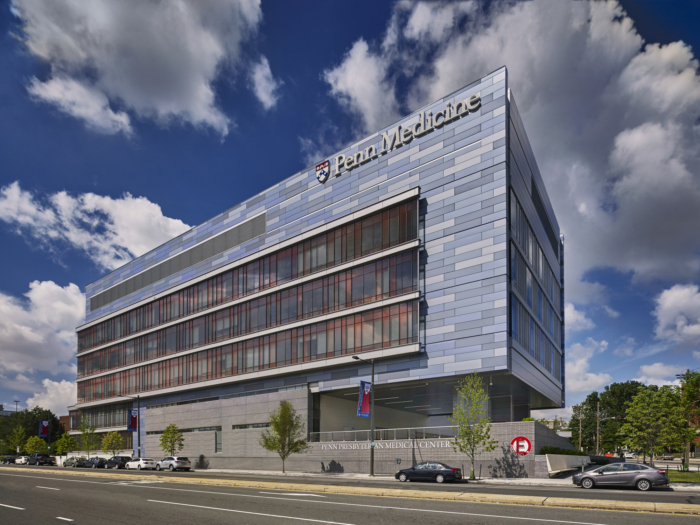
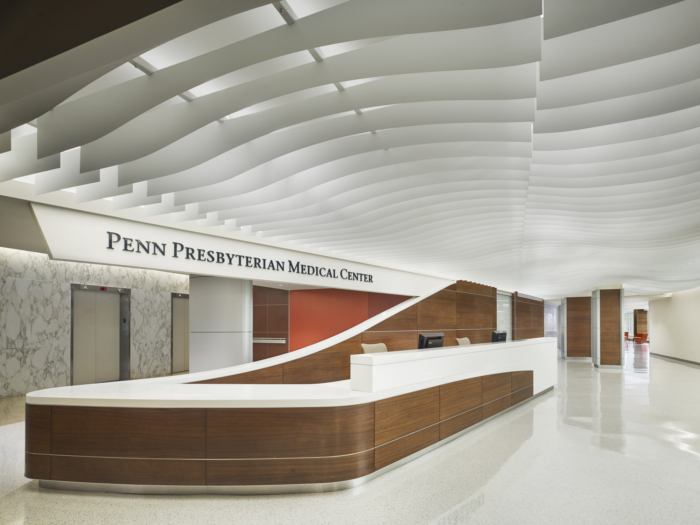
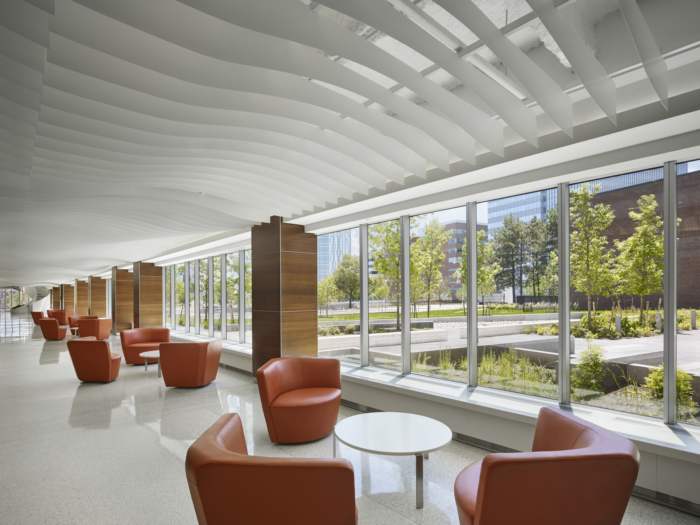
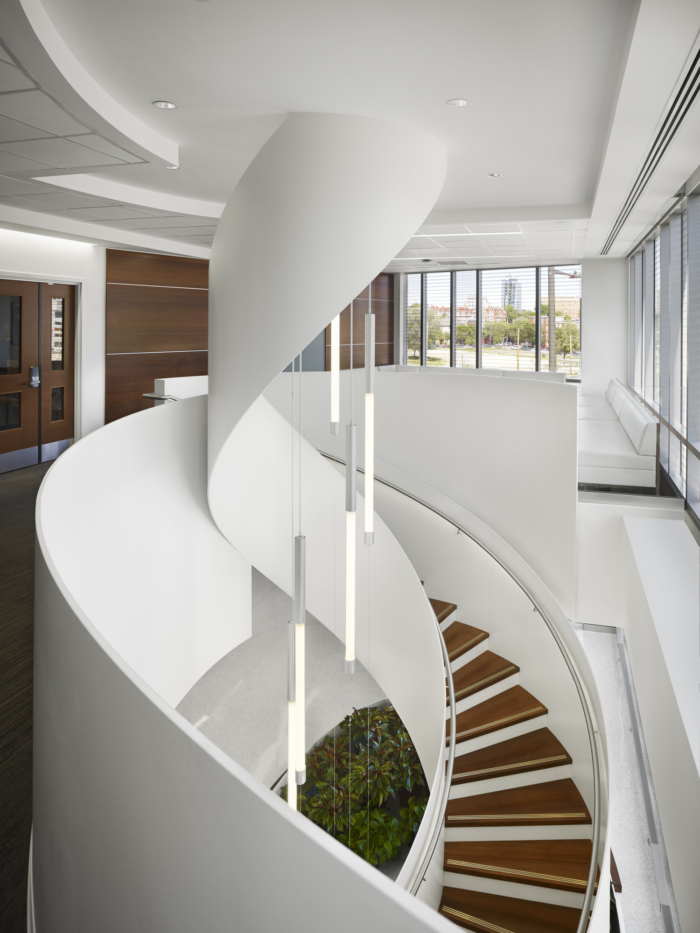
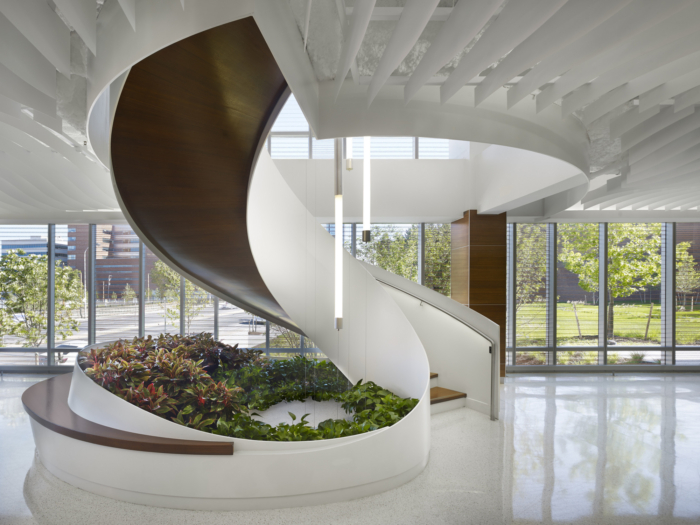
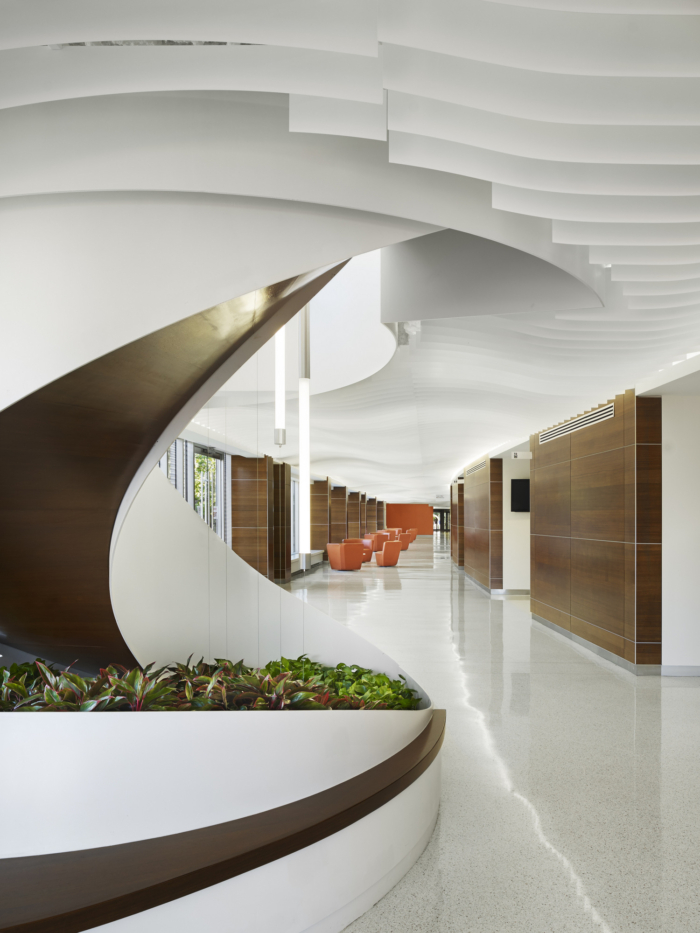

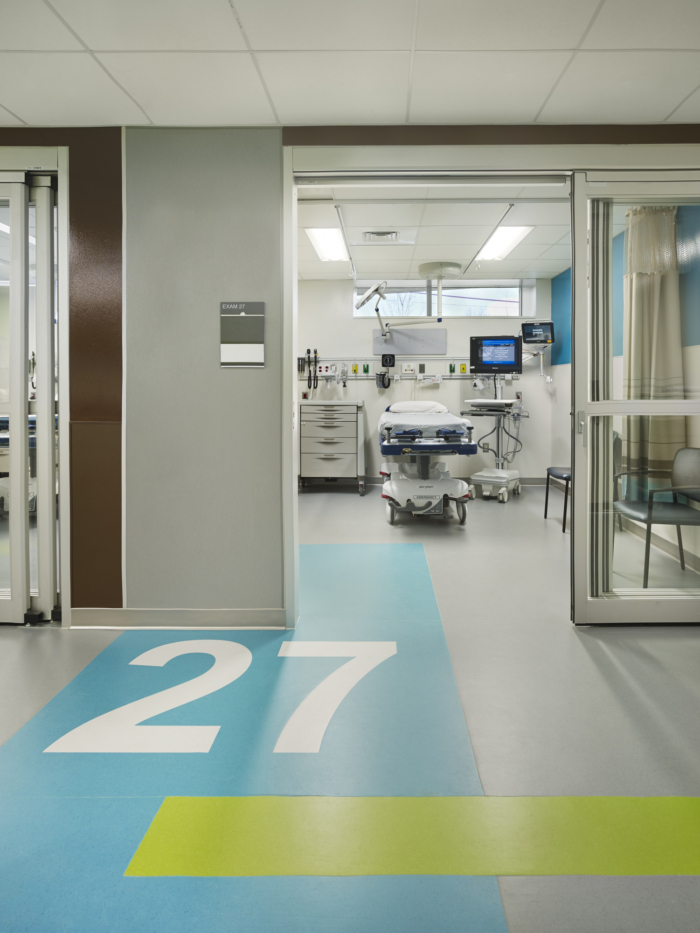
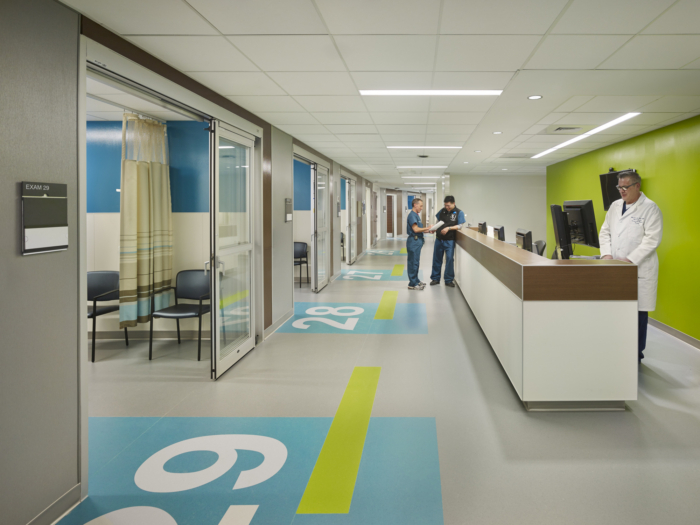



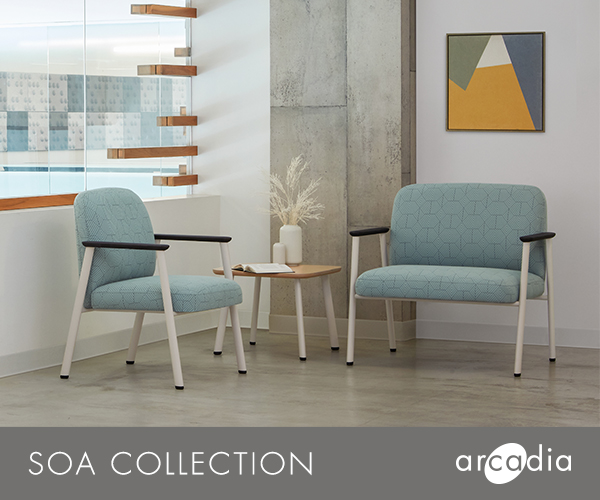










Now editing content for LinkedIn.